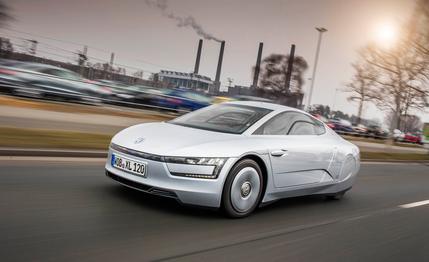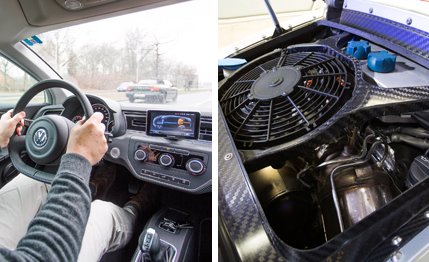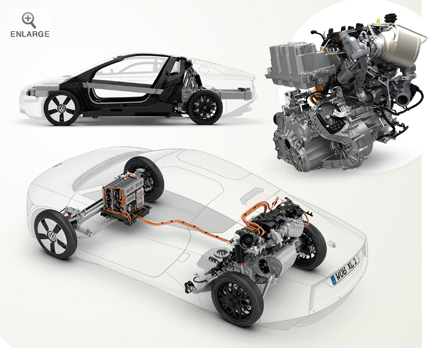 First Drive Review
First Drive Review
If you drove a Volkswagen XL1, you’d be unlikely to encounter anything like it coming the other way. That’s because VW plans to build only 250 copies of its 283-mpg hyper-hybrid, and also because GM long ago crushed most of its EV1s, from which the XL1 looks almost entirely plagiarized.
Here’s another example of VW chairman Ferdinand Piëch going to extremes—in this case, to show his many critics in the German Green Party where to stick it. The XL1 is 1800 pounds of carbon fiber, aluminum, and plastic propelled by a two-cylinder turbo-diesel engine sharing the trunk with an electric motor. As of this writing, this Karmann Ghia of tomorrow may be sold or leased, VW hasn’t decided, but any sticker price should exceed $120,000. Sorry; European distribution only.

Just 45.4 inches tall, the XL1 is half an inch lower than a Lamborghini Gallardo, and it would be impossible for anyone but Tom Thumb dipped in Vaseline to enter through conventional doors. Even so, normal people climbing in have to bow deeply under the forward-winged hatches, step over a sill that is nearly a foot wide, and drop into a body that clears the ground by a mere three inches. If you expect this Volkswagen XL1 to be a sports car, with its proportions and ultra-lightweight carbon-fiber tub with attached aluminum crash structures and body panels, you are mistaken. Push the starter button to see.
Instead of engine yowl, an indicator at the bottom of the central speedometer simply reads “READY.” Pull the lever of the seven-speed, magnesium-case, dual-clutch automatic to “D,” and push the accelerator. The electric motor integrated into the gearbox gently whirs like a blender, and the XL1 moves off. The low-rolling-resistance Michelins sound like grinding millstones—they are sized 115/80R-15 in front and 145/55R-16 in back, and no, that is not a misprint. The front rubber, just 4.5 inches wide, is inflated to 44 psi.
slim fast
The skinny tires provide a comfortable ride up to city speeds. As the car accelerates on electric power, an orchestra of mechanical noises plays from the wheels and the transaxle. Every push of the brake pedal is accompanied by the rumble of pads sanding the ceramic discs. “We did not use any insulation,” says VW development engineer Ulrich Mitze, stating the obvious. “And the side windows are made of polycarbonate.”
Saving weight was the major developmental target for the second most extreme project within the Volkswagen Group after the Bugatti Veyron. The goal was a saleable “1-liter car,” or one capable of averaging 1.0 liter/100 km of fuel consumption. That’s a target of 235 mpg, nearly five times better than a Toyota Prius’s EPA combined rating. And VW claims to have beaten it.